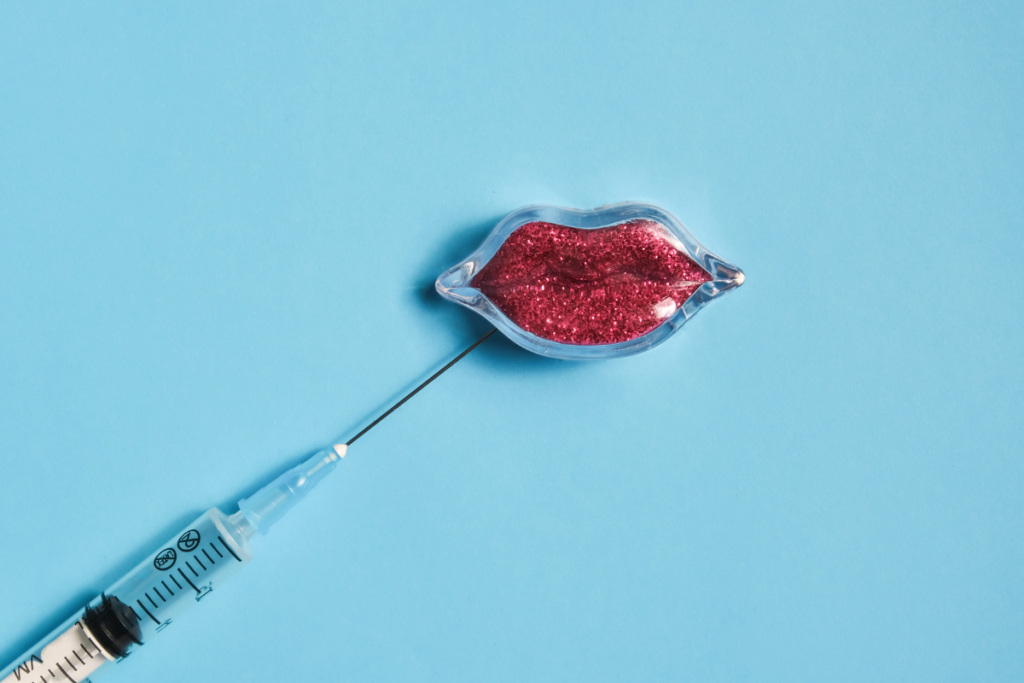If you are still bleeding or having vaginal discharge four weeks (or more) after the birth of your baby and you want to know what’s up, you’ve come to the right place. Below we cover…
- What the typical schedule is for postpartum bleeding and discharge, officially known as lochia
- Signs of postpartum hemorrhage – it is rare but it can still happen several weeks after delivery and can be life threatening
- Signs of your period starting again
The “Typical” Postpartum Bleeding/Discharge Schedule
After you have a baby, either through vaginal birth or cesarean delivery, your uterus contract and starts expelling blood and tissue from the uterine wall over a period of several weeks. This discharge is known as lochia (fun fact: the word “lochia” comes from a nickname for Greek goddess Artemis, given her role protecting women in birth). While sources can vary, lochia is generally expected to last 4 to 6 weeks.
Lochia typically has three stages:
- Lochia rubra: Red, brownish-red blood, blood clots, and discharge for a few days after delivery
- Lochia serosa: Discharge becomes increasingly watery and pink/brown, lasting two to three weeks
- Lochia alba: Yellowish white discharge for another two to three weeks. At this point the body is getting rid of decidua, the thick mucus membrane that lines the uterus during pregnancy, among other cells.
Of course, what is considered typical can vary from person to person. A small study from 1999 found the mean was 30 days of discharge, and the total amount of discharge was around 200 to 500 mL. (Normal sized sanitary pads typically holds 5 mL, about a teaspoon, of blood. So that equals about 40 to 100 pads over the course of a month). But up to 15% of women will continue passing lochia for six to eight weeks after birth.
The authors of the 1999 study also found that the order of discharge colors can vary. Some women went from reddish brown to lighter color discharge and back to reddish brown. They found that women who breastfeed for a short period of time or don’t breastfeed at all are more likely to have the more irregular pattern of bleeding, but called for more research. Lastly, there isn’t much evidence showing that whether you breastfeed or if you are on birth control effects how long you bleed.
Signs of Secondary Postpartum Hemorrhage
Postpartum hemorrhage is one of the leading causes of maternal death in the United States. Most of the time it occurs in the first 24 hours after labor, but in rarer cases (an estimated 0.2 to 2.5% of postpartum patients in high-income countries), it can happen weeks afterwards.
In studies, the most common time for secondary postpartum hemorrhage is one to two weeks postpartum. But they can still occur past two weeks.
Signs of postpartum hemorrhage is heavy bleeding – ACOG described it as “soaking through two pads an hour for more than 1 to 2 hours.” Other symptoms to look out for include pelvic pain, fever, a drop in blood pressure, and uterine tenderness. Any major shift in post-birth vaginal bleeding–especially if it seems like excessive bleeding out of nowhere–is worth getting medical attention for, as it can become a life-threatening issue. Don’t hesitate to call your doctor or healthcare provider as you may need emergency care like a blood transfusion or surgery.
The most common causes of postpartum hemorrhage, according to a 2015 study, are:
- Retained products of conception, often related to the placental tissues
- The site where the placenta attached itself to the uterus has not shrunken down after birth
- Infection
The main risk factors for new moms to experience this includes placental abnormalities, prolonged labor, and if you required manual removal of the placenta. Uterine atony — when uterine contractions aren’t strong enough after delivery to shut off placenta blood vessels — is the most common cause of postpartum hemorrhage immediately after vaginal delivery or cesarean section, but is cited as less likely in the weeks after delivery.
Could Bleeding at Four Weeks Postpartum Be Your Menstrual Period?
It is not absolutely impossible, but the likely answer is no. A review of several studies found that, on average, patients began ovulating between 45 to 94 days postpartum, or about 6 to 12 weeks. But there were women who ovulated as early as 25 days postpartum, or less than four weeks from delivery. Even if you ovulate that early, it typically takes 10-14 days after ovulation until your period actually begins. Based on that data, your first period, at the earliest, would be about 5 to 6 weeks after delivery.
It can also depend on whether you are breastfeeding. Breastfeeding requires a lot of metabolic energy, and if you are breastfeeding beyond the nutritional intake needed to maintain that energy, the hormone that regulates ovulation can be suppressed.
SOURCES
3 Conditions to Watch for After Childbirth | ACOG
ACOG Expands Recommendations to Treat Postpartum Hemorrhage | ACOG
Quantitative Blood Loss in Obstetric Hemorrhage | ACOG
Postpartum Pain Management | ACOG
Severe secondary postpartum hemorrhage: a historical cohort – PubMed (nih.gov)
Persistent postpartum bleeding – PMC (nih.gov)
Is This My Period? A Guide to Navigating Postpartum Bleeding with NFP – Vitae Fertility
What to Expect After Your Vaginal Delivery? – Kamm McKenzie OBGYN (kmobgyn.com)
Lochia (Postpartum Bleeding): How Long, Stages, Smell & Color (clevelandclinic.org)
Postpartum Bleeding: What’s Normal, What’s Not, Causes, Treatment (webmd.com)
Bleeding after birth: 10 things you need to know | Life as a parent articles & support | NCT



